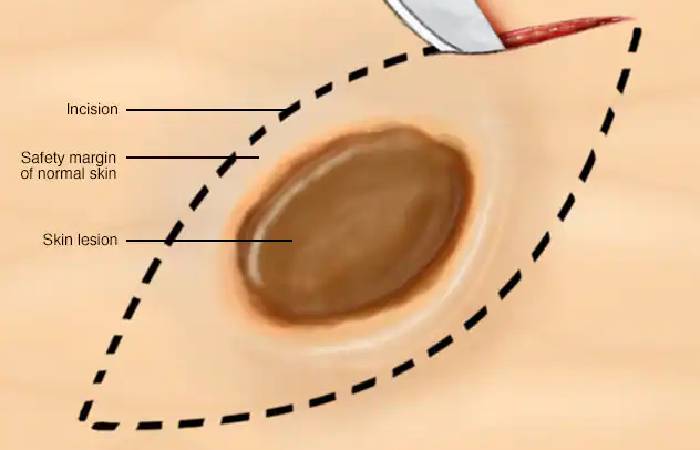Skin Biopsy – The process of separating a tiny skin sample for testing is termed as a skin biopsy. The method can help to diagnose a skin lesion (abnormal skin) verified under a microscope for skin cancer, various disorders, or skin infections. Therefore it is only essential for specific skin lesions. According to your provider, many lesions can be analyzed by looking at them.
The use of a razor blade or scalpel, a shave biopsy extracts a sample from the top layers of skin (a small cutting blade used for surgery). If it seems your illness primarily affects the top layers of skin, then, your doctor may perform a shave biopsy.
The skin sample is taken during a punch biopsy by using a specialized equipment with a circular blade. If your problem affects the deep layers of skin, your doctor will performs it.
However during an excisional biopsy, the specialist removes the entire skin lesion, with some healthy skin remaining around it.
Skin Biopsy – Types of Biopsy
There are three main ways to do it. However, it depends upon the size, the location and the depth of the skin lesion. Hence depending on these conditions, only the specialist performs the biopsy. They are as follows
- Shave Biopsy
- Punch Biopsy
- Excisional Biopsy
- Incisional Biopsy
Shave Biopsy – In this type of biopsy, the specialist uses equipment similar to that of a razor. A specialist operates it to remove a small area of the top layer of the skin.
Punch Biopsy – In this type of biopsy, the doctor uses a round tool to remove a small core of the skin, moreover consisting of the deeper layers (epidermic area, dermic area and shallow fat).
Excisional Biopsy – A surgeon uses a tiny knife (Scalpel) to remove the whole lump or a part of the abnormal skin. Therefore it includes an area of normal skin down to or over the fatty layer of the skin.
Incisional Biopsy – In this biopsy, the surgeon uses a scalpel to remove a small part of a big lesion. Moreover dermatologist goes deeper when it needs. They use a curved blade or scalpel to dismiss or other skin concerns. When a dermatologist only part of the growth, it’s called an incisional biopsy.

Some patients need stitches, and dermatologist stop the bleeding and treat your injury if necessary. Treatment can include applying pressure or medication. If you have excision or punch biopsy, a dermatologist can close the wound by stitching it.
Skin Biopsy – Procedure
For operating this type of biopsy, the doctor first clean the affected area and then numb the skin by using an anaesthetic (pain relieving) injection. By following any of the biopsies according to the skin lesion condition, the specialist sends the skin for sampling. Shave biopsy doesn’t require stitches, whereas the other biopsy needs steri-strips. The specialists performs this entire procedure in the hospital.
What do the Doctors do with a its Sample?
The tissue is processed, and a pathologist tests the its tester under a microscope to know if there is any disease. The results normally comes within one to two weeks.
Conclusion
Skin Biopsy is a modest process which has an incredible analytical value. Knowledge of real features of this technique, along with alertness of difficulties arising from it and its supervision, takes a dermatologist a long way in his dermatology practice in terms of arriving at a analysis or providing new and more information regarding the disease.




GIPHY App Key not set. Please check settings